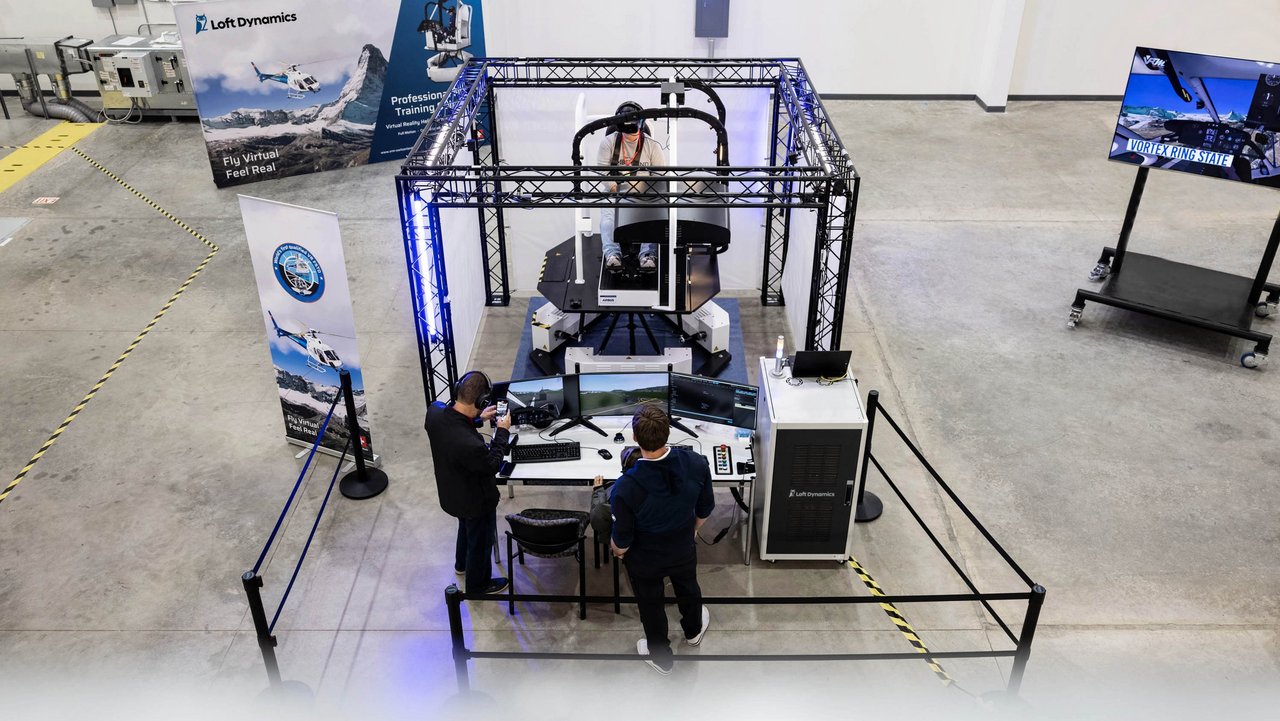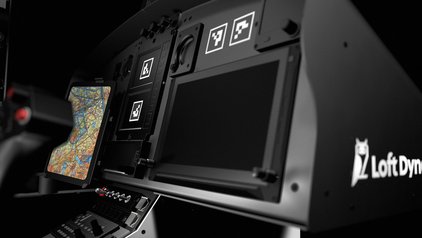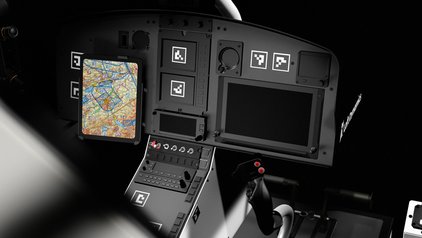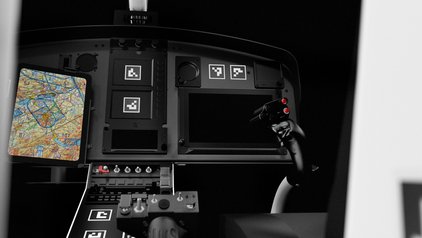A true revolution in pilot training

“It’s hard to overstate how monumental this is for aviation.” That’s the way Loft Dynamics’ main investor and board member Sky Dayton describes the company’s revolutionary virtual reality (VR) full-motion helicopter flight simulator. It is the world’s first and only VR fullmotion simulator qualified by a national aviation regulator, achieving flight simulation training device (FSTD) Level 3 authorization from the European Union Aviation Safety Agency (EASA) in 2022. Building on this epic achievement, Loft Dynamics has just rebranded and raised $20 million in financing to expand globally.

Sky Dayton
Investor
Dayton explained that “as a jet pilot, I have spent countless hours in traditional flight simulators and again and again, experienced their many limitations. When I tried Loft Dynamics, I was truly blown away. The realism is astounding. When I ‘landed’ on a runway and the skids touched down, I could feel the texture of the asphalt. If you move, the simulation moves. I practiced emergency procedures that would be extremely dangerous in an actual helicopter. Days later, I still had the muscle memory of the movements and vibrations of the experience. With this simulator, Loft Dynamics has begun to truly revolutionize pilot training in terms of quality, safety, cost and more — all at a time when the global pilot shortage has already reached a crisis point.” This revolution of pilot training has already begun, with major growth in the U.S. and other international markets well underway, supported by the new $20-million investment from Craft Ventures, Sky Dayton and UP.Partners.

Loft Dynamics CEO and founder Fabi Riesen is extremely pleased about these investments, which have supported the rebranding of the company from VRM Switzerland to Loft Dynamics. “Our rebranding is critical to reflect the current global nature of our steady growth,” he said. “We chose the word ‘loft’ carefully as it reflects an upward movement in the air, but it also refers to the fact that our full-motion VR simulator is so small that it can fit in the loft of a hangar or other small spaces, such as a trailer. Our growing team is proud of the new name and to be expanding the training of pilots with our highly efficient, exceptionally realistic and dramatically less expensive simulator.” Indeed, the technology combines a high-resolution VR system, a dynamic six degrees of freedom motion platform and a full-scale replica cockpit in a package 10 times smaller and roughly 20 times less expensive than traditional fullmotion simulators. What’s more, it cuts air time training by up to 60 percent. Loft Dynamics’ simulators combine panoramic views inside and outside the aircraft — from exact perspectives to precise colors, shading, vibrations, better visual cues, and dramatically more realistic motion and sound characteristics of the actual aircraft. The pilot experiences the correct loads and force feedback from flight controls and is fully immersed.

Patrick Ky
Executive director and head of EASA
The Loft Dynamics simulator allows pilots to regularly train the full range of normal, abnormal, and emergency procedures, in addition to all manner of weather conditions. Traditional full-motion flight simulators are only available in limited training centers built specifically to house their huge size. With Loft’s simulators, “you don’t have to travel to train anymore, away from work and family and be gone for weeks or months,” Dayton said. “These new simulators will be integrated into all bases of operation, and pilots will be able to train all the time — not just for required regulatory checks, but to regularly hone and add to their skills.” Patrick Ky, executive director and head of EASA, said, “EASA looks forward to seeing the flight safety benefits of this technology as soon as possible, in line with the objective of EASA’s Rotorcraft Safety Roadmap of increasing safety by 50 percent by the end of 2028 compared with 2017 figures.” Loft Dynamics simulators are already in many European countries, Africa and the Middle East. “In the U.S. market, we already have simulators running in Colorado, and additional units have already been shipped,” Riesen said. “We are also working with the FAA [Federal Aviation Administration] toward qualification. We are extremely excited about the growth we will achieve this year in the U.S. and other markets.”
A Loft Dynamics simulator for the Airbus H145 — widely used in emergency medical services — is now in progress, in partnership with Airbus Helicopters. Meanwhile, updating the glass cockpit (Garmin G500 TXi) and dual hydraulics are the next steps in development for the H125 model. Riesen explained that it’s been a genuine co-development with Airbus Helicopters from the start, with Airbus providing the H145 simulation package and full expertise. The company is also adding to its portfolio of fixed-wing simulators with an eye on the eVTOL market. “The pilot shortage is only getting worse, even without the impending arrival of the eVTOL industry,” Dayton said. “Globally, we need to make pilot training much more effective, faster, cheaper and safer with less environmental impact, and that is what Loft Dynamics offers.” “After many years in development, we are ready to expand Loft Dynamics to become a global company,” Riesen added. “The new funding comes at exactly the right moment to meet demand and accelerate the range of aircraft types we support.”





